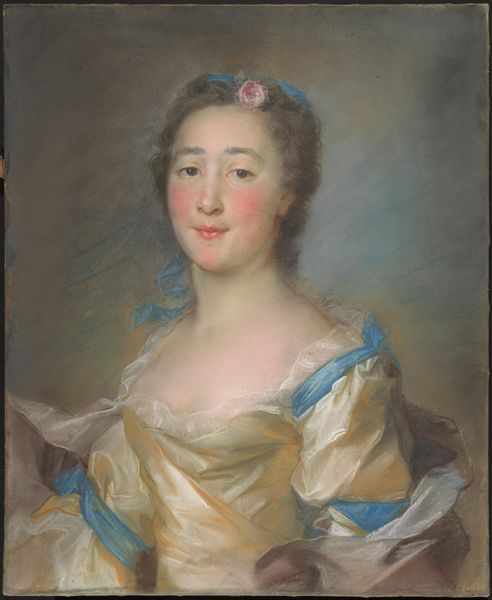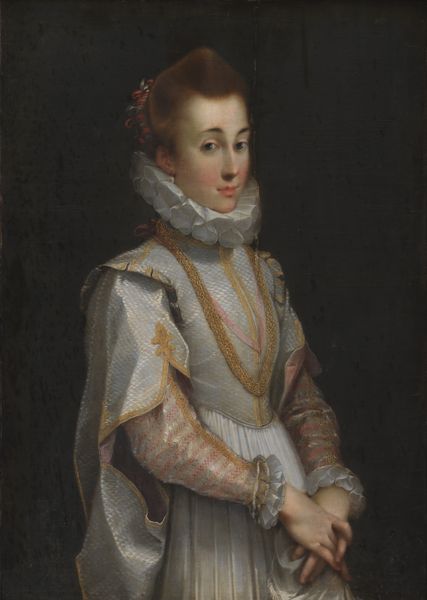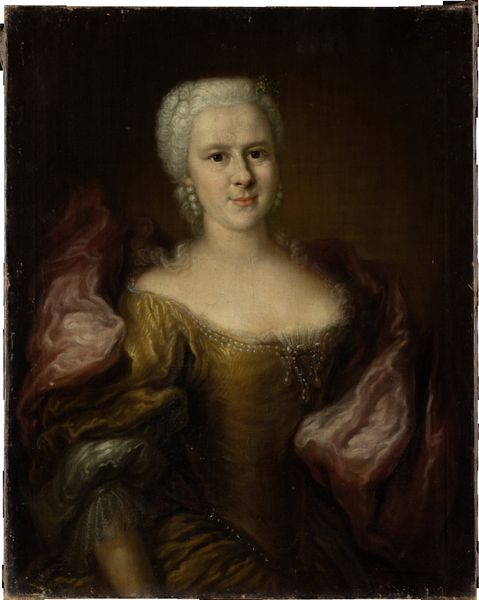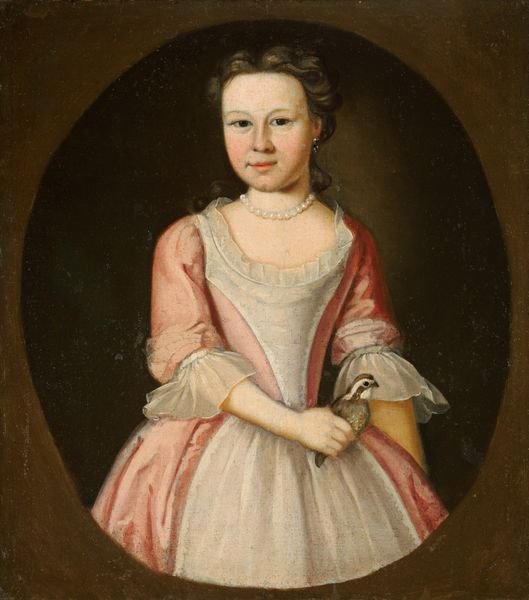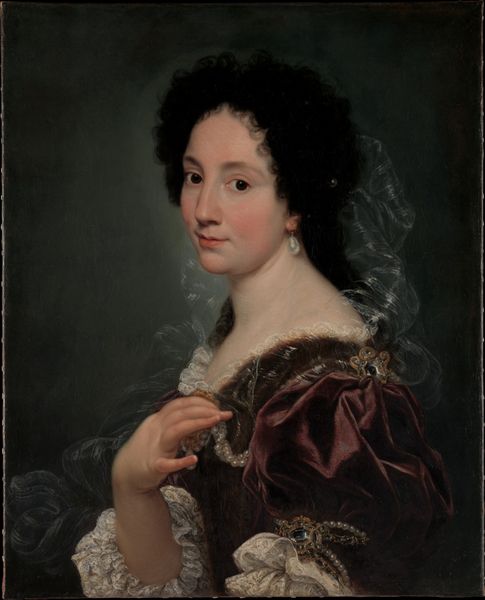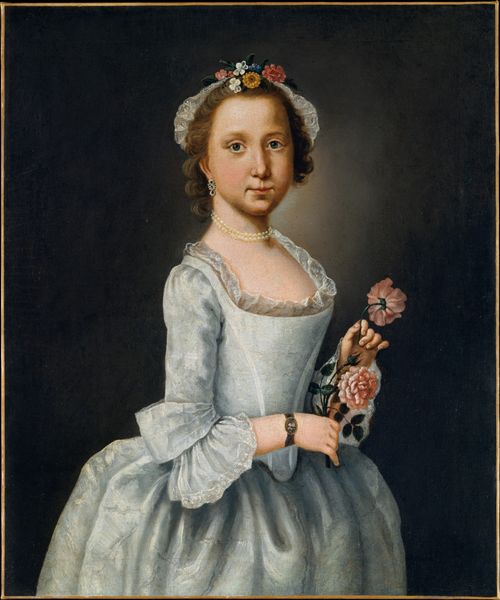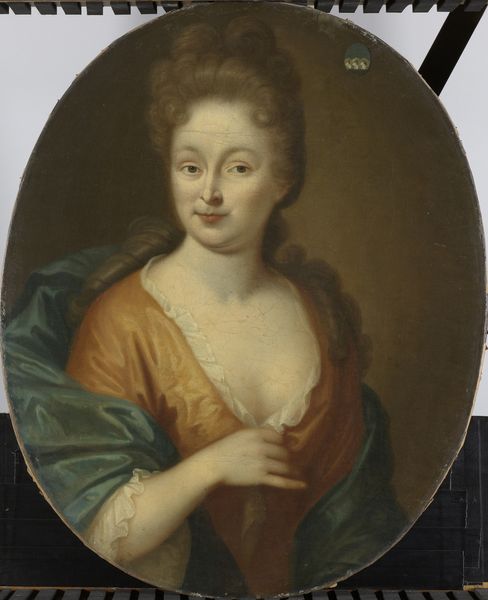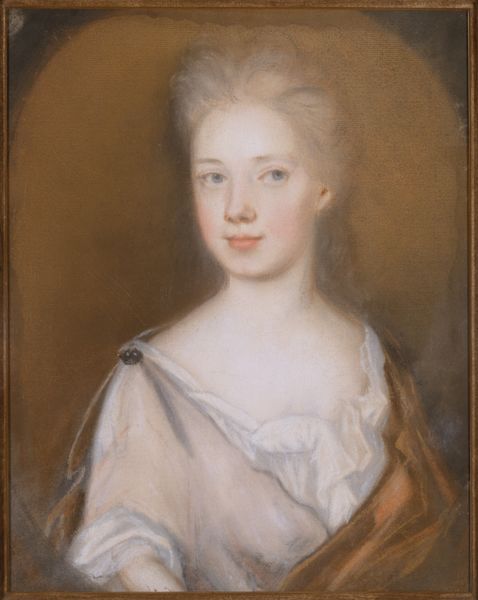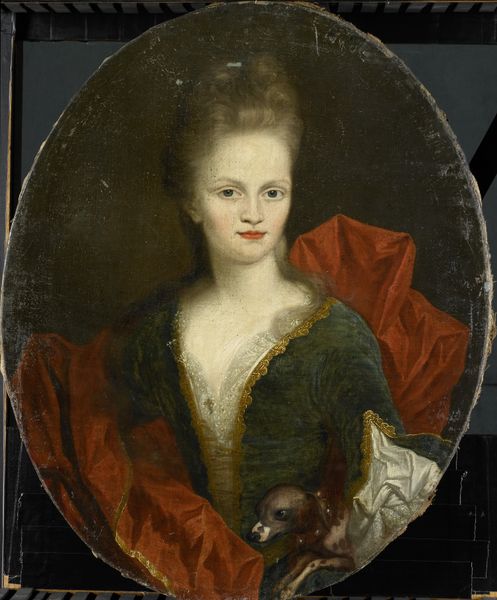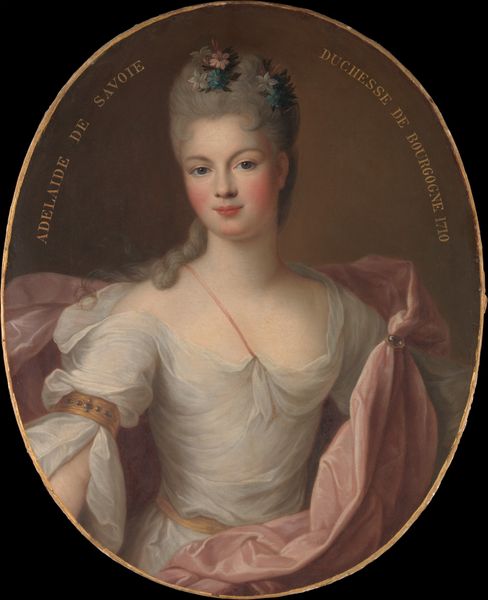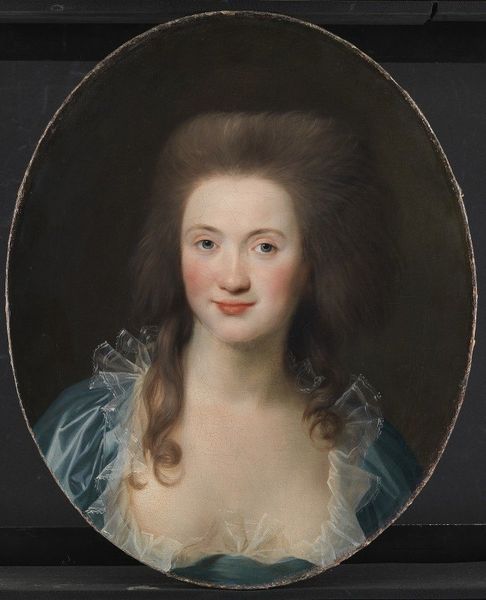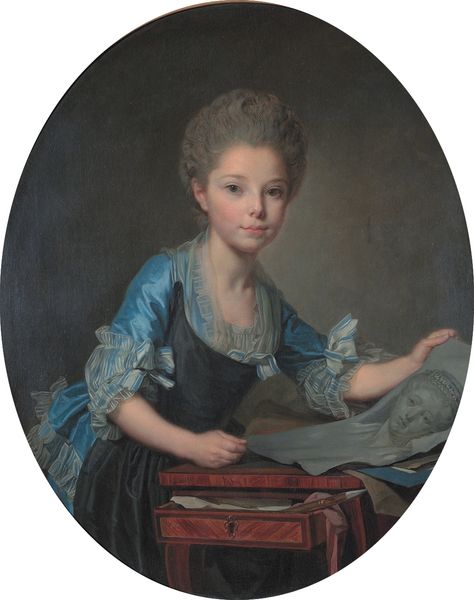
Dimensions: 30 x 25 in. (76.2 x 63.5 cm)
Copyright: Public Domain
Curator: This is Jeremiah Theus' "Mrs. John Dart," painted between 1769 and 1774, using oil paint. Editor: It's interesting how simply she's adorned, yet the painting style tries to imbue her with elegance. What strikes you when you view this work? Curator: Let's consider the materials. Oil paint was increasingly accessible then, enabling a broader range of artists to capture likenesses. However, the pearls, fur trim, and even the specific cut of her gown all signal wealth and social standing. Who were the suppliers of these materials, and what were their social relations? How were those things obtained? Think about the labor involved in each step, from the pearl divers to the seamstresses, and the sitter’s ability to command that labor. Editor: So you're saying that what she's wearing matters because of how those materials represent her class? Curator: Exactly! The artist's labour in creating this portrait should be considered within that framework too. How does Theus' skill – or perhaps the limitations of it – play into conveying the desired image of wealth and refinement? Were these skills available for any artisan who dedicated enough labour or was there a gate keeping to restrict some to be anonymous craftsmen. Editor: I never thought about portraits in terms of labor before! It's so much more than just capturing someone's face. Curator: Precisely. Consider the social dynamics embedded in the commission and creation of such portraits, the circulation of wealth. Every visible element suggests a material trail connected to social practices. What can be uncovered about how these materials shaped perceptions of status during the late 18th century in colonial America. Editor: Looking at it this way reveals much more than just a pretty face. It exposes complex relationships, commerce and labor that contributed to its very existence. Thank you! Curator: Indeed. Reflecting upon an art object through its materials offers valuable insights, reminding us that even portraits are built on a network of labor and societal hierarchies.
Comments
No comments
Be the first to comment and join the conversation on the ultimate creative platform.

